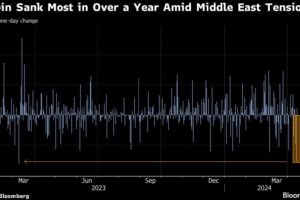
For the past 17 days, the Bitcoin price has been trading within a narrow 8.5% range, from $27,250 to $29,550, causing the 40-day volatility metric to drop below 40%. This wasn’t restricted to cryptocurrencies, as the S&P 500 index’s historical volatility reached 17%, its lowest level since December 2021.
But will $28,000 become the new resistance? Not according to the latest Bitcoin (BTC) futures and options data. Nevertheless, macroeconomic conditions remain the main driver for risk markets’ price fluctuations in the near to medium terms.
BTC price flattens as investors lose risk appetite
A myriad of reasons could be given to explain the relatively small price oscillations in risk markets, including the expectation of a recession, investors unwilling to place new bets until the United States Federal Reserve ends its rate hikes, or increased demand (and focus) on fixed-income trades.
The problem is that no one can prove what has been causing investors to restrict their risk appetite and drive Bitcoin’s price sideways. Many — including Warren Buffett, the multi-billionaire fund manager — fear that commercial real estate is a growing concern, which could trigger major turbulence ahead.
While some believe that the U.S. debt ceiling discussion and the banking crisis could further cement the U.S. dollar’s weakening, Buffett does not foresee alternatives. The finance mogul is a long-term critic of the precious metal gold, as his investment thesis prioritizes yield-providing assets.
The debt ceiling drama has caused Treasury Secretary Janet Yellen to warn that a “steep economic downturn” would follow if Congress fails to act in the next few weeks.
On the one hand, the government is facing pressure to sustain economic activity and contain the banking crisis. Ultimately, increasing the debt limit would add liquidity to the markets, further triggering inflation.
This complex environment of inflation risks, an economic downturn and a weakening U.S. dollar might have caused investors to lose interest in risk assets and concentrate their bets on fixed-income trades as interest rates have moved above 5% per…
..






